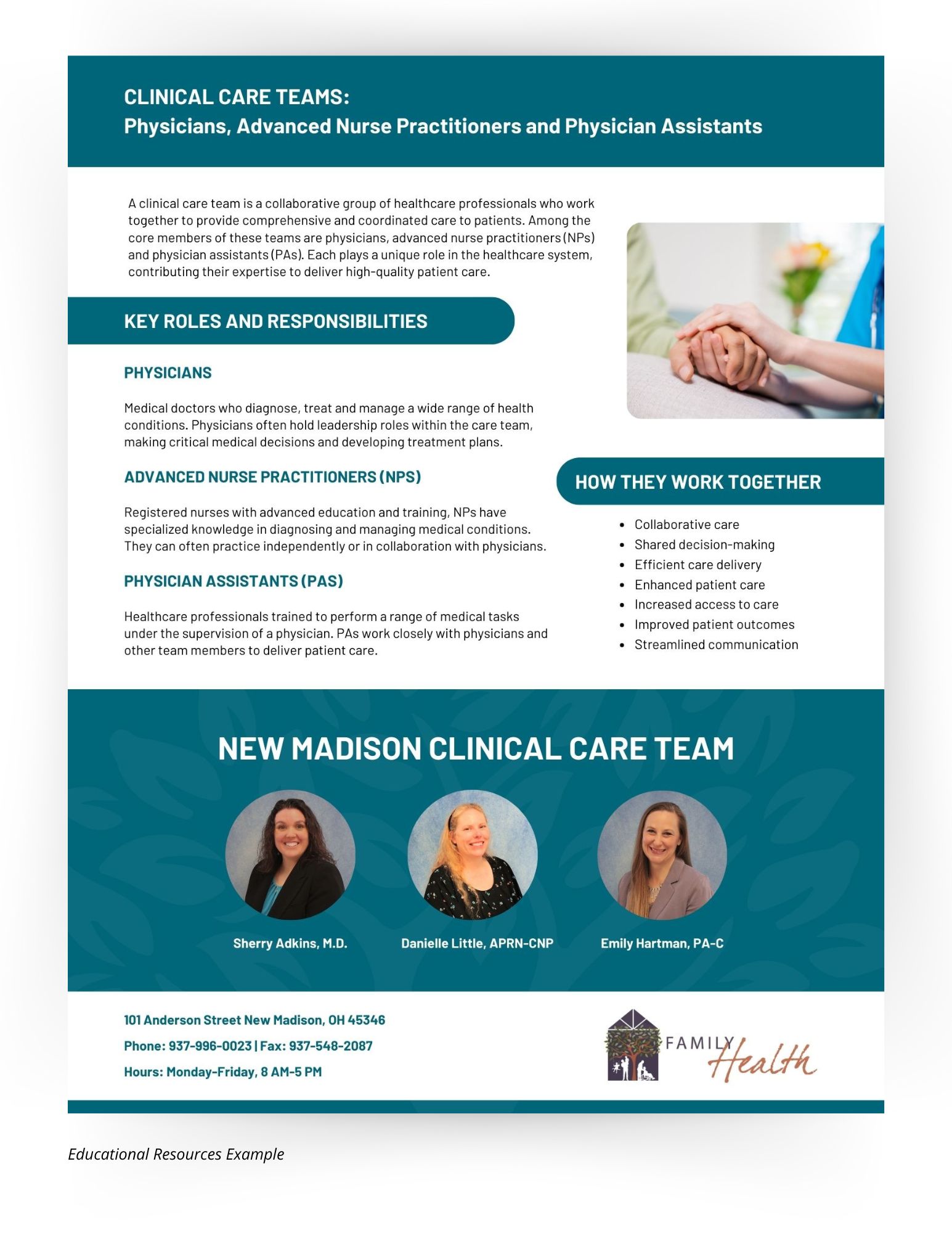Weathering the Winter in Rural Communities: The Vital Role of Primary Care
By Emily Bennett
With [fill-in-the-blank-sickness] season in full-swing, rural healthcare organizations face a critical opportunity to highlight the importance of primary care. This time of year often brings an uptick in illness, and timely communication about primary care can make a significant difference in community health outcomes. Health communicators need to understand the diverse beliefs and needs of different audience segments, which is key to crafting effective messaging.
Differing Patient Population Perspectives
Different generations may consider primary care differently. Millennials, for instance, tend to prioritize convenience and accessibility over long-standing patient-provider relationships. They want quick access to care and are often comfortable seeing nurse practitioners, physician assistants or any available member of the care team. For this group, communicators should emphasize messages about online scheduling, telehealth options and same-day appointments. This ensures they know they can get the care they need without long waits.
Baby Boomers, on the other hand, often value continuity of care and trust in a specific provider. They may hesitate to see someone other than their primary doctor, even if it means delaying care. This delay can lead to worsening conditions and costly emergency room visits. For this audience segment, focus communication on the team-based care model. Primary care promoters could focus on the qualifications and roles of nurse practitioners and physician assistants as extensions of their trusted doctor to help alleviate fears about the unknown. Reinforce the message that timely care is crucial and can prevent more serious health issues.
Overcoming Winter Weather Barriers
Winter weather can compound the challenges rural residents face in accessing primary care. Snow, ice and limited public transportation options may deter patients from making appointments. From a communication standpoint, consider promoting telehealth as a convenient alternative for non-emergency consultations. Highlight any transportation assistance programs, such as partnerships with local community organizations that offer rides to medical appointments. For patients with chronic conditions, emphasize the importance of scheduling routine visits before severe weather hits to avoid missed appointments.
No matter the communication challenge this winter season, healthcare organizations should consider incorporating these strategies into their outreach efforts:
- Leverage Local Media: Use radio, newspapers and social media channels popular in the community to share clear, consistent messages about primary care options.
- Create Tailored Campaigns: Develop messaging that speaks directly to different audience segments. For millennials, emphasize convenience; for boomers, highlight trust and continuity of care.
- Provide Educational Resources: Offer easy-to-understand materials that explain the benefits of seeing any qualified team member for timely care (see Family Health Services of Dark County example). Address common misconceptions about team-based models.
- Emphasize Preparedness: Encourage patients to plan ahead by scheduling appointments early and considering telehealth for non-urgent needs during bad weather.
- Engage Community Partners: Collaborate with local organizations to improve access and awareness, such as offering transportation solutions or hosting flu shot clinics.
The winter season is a prime opportunity to reinforce the value of primary care and provides an opportunity for your healthcare organization to address generational preferences, winter weather challenges, and ensure your patients stay healthier and connected to care.


